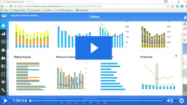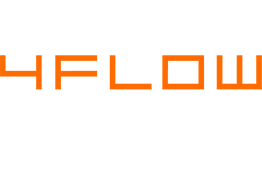SAP S&OP
Filter By
Browse By
- SAP Analytics and AI
- SAP Application Development and Integration
- All SAP Application Development and Integration
- SAP ABAP
- SAP ABAP Development Tools
- SAP ABAP Test Cockpit
- SAP API Management
- SAP BAPI
- SAP Basis
- SAP BRF
- SAP Business Application Studio
- SAP CMS
- SAP Design Studio
- SAP Development Tools
- SAP DevOps
- SAP EAI
- SAP EDI
- SAP Extension Suite
- SAP Fiori
- SAP Fiori Elements
- SAP Integration Suite
- SAP Low Code Application Development
- SAP Low Code Automation
- SAP Netweaver
- SAP Release Management
- SAP UI5
- SAP Web Application Server
- SAP Web IDE
- SAP Business Process Management
- SAP Center of Excellence
- SAP CIO
- SAP Customer Experience
- SAP Data and Data Management
- All SAP Data and Data Management
- SAP BW
- SAP BW/4HANA
- SAP Crystal Reports
- SAP Data Archiving
- SAP Data Center
- SAP Data Governance
- SAP Data Integration
- SAP Data Migration
- SAP Data Quality
- SAP Data Services
- SAP Data Strategy
- SAP Data Visualization
- SAP Data Warehouse Cloud
- SAP DMS
- SAP Document Control
- SAP EIM
- SAP ETL
- SAP ETL Tools
- SAP HANA
- SAP HANA Administration
- SAP HANA Deployment Infrastructure
- SAP HANA Studio
- SAP Master Data
- SAP Master Data Governance
- SAP MDM
- SAP Enterprise Architect
- SAP Enterprise Asset Management
- SAP ERP
- SAP Finance
- All SAP Finance
- SAP Accounting
- SAP AR AP
- SAP Asset Accounting
- SAP Billing Systems
- SAP BPC
- SAP BRIM
- SAP Cash Management
- SAP Central Finance
- SAP Controlling
- SAP COPA
- SAP Cost Center Accounting
- SAP e-invoicing
- SAP FICO
- SAP Finance Automation
- SAP Financial Closing Cockpit
- SAP Financial Consolidation
- SAP Financial Planning
- SAP FX Risk
- SAP General Ledger
- SAP Global Tax Management
- SAP Hyperion
- SAP Order to Cash
- SAP Payment Processing
- SAP Profitability Analysis
- SAP Rebate Management
- SAP S/4HANA Finance
- SAP Universal Journal
- SAP Governance Risk and Compliance
- SAP Human Capital Management
- SAP Intelligent Technologies
- SAP Platform and Technology
- All SAP Platform and Technology
- SAP Business Technology Platform
- SAP Cloud Connector
- SAP Cloud Integration Platform
- SAP Cloud Migration
- SAP Cloud Platform
- SAP Cloud Providers
- SAP Cloud Strategy
- SAP Container Platform
- SAP Digital Asset Management
- SAP Digital Integration Hub
- SAP Digital Signature
- SAP HANA Enterprise Cloud
- SAP HEC
- SAP Hyperscalers
- SAP Infrastructure
- SAP Messaging
- SAP Smart Forms
- SAP Quality and Testing
- SAP Security
- SAP Spend Management
- SAP Supply Chain Management
- All SAP Supply Chain Management
- SAP APO
- SAP Asset Management
- SAP Business Network
- SAP Digital Manufacturing Cloud
- SAP Digital Twin
- SAP EWM
- SAP IBP
- SAP Inventory Management
- SAP Label Printing
- SAP Logistics
- SAP Manufacturing
- SAP Manufacturing Automation
- SAP MES
- SAP MII
- SAP MM
- SAP MRO
- SAP MRP
- SAP Order Management
- SAP Plant Maintenance
- SAP PLM
- SAP Production Planning
- SAP S&OP
- SAP SD
- SAP SPM
- SAP Supply Chain Planning
- SAP Track and Trace
- SAP Transportation Management
- SAP System Administration
What Is Sales and Operations Planning?
By integrating the operational areas of the business (e.g., sales, marketing, procurement, manufacturing, etc.), Sales and Operations Planning (S&OP) ensures monthly alignment with the enterprise’s supply, demand, and finance planning needs. Effective and efficient supply chain management relies on a well-orchestrated and executed S&OP process.
Execute S&OP with SAP Integrated Business Planning
SAP provides S&OP planning as part of SAP Integrated Business Planning to drive revenue growth, reduce inventory carrying costs, and increase productivity. Key capabilities include:
What Is Sales and Operations Planning?
By integrating the operational areas of the business (e.g., sales, marketing, procurement, manufacturing, etc.), Sales and Operations Planning (S&OP) ensures monthly alignment with the enterprise’s supply, demand, and finance planning needs. Effective and efficient supply chain management relies on a well-orchestrated and executed S&OP process.
Execute S&OP with SAP Integrated Business Planning
SAP provides S&OP planning as part of SAP Integrated Business Planning to drive revenue growth, reduce inventory carrying costs, and increase productivity. Key capabilities include:
• Enable real-time planning
• Simulate and compare scenarios
• Collaborate across departments
• Monitor performance and future alignment
Key Considerations for SAPinsiders
- Operational Excellence: Achieving S&OP Success. Watch this on-demand webinar to take your S&OP process to the next level. Often, companies lack end-to-end supply chain integration because of functional silos and poor executive support within their current S&OP process. Alex Kahsar, Senior Solution Advisor for GIB USA, leads the discussion to showcase the benefits of an S&OP process that is capable of operating inside a core SAP ERP system, while also simplifying and optimizing supply chain execution. Too often, SAP users resort to a patchwork of disparate solutions to solve various use cases, creating complex, brittle connections, which prevent organizations from adapting to future business changes.
- 5 Steps of S&OP to Achieve an Integrated Business Plan. In this article, learn the framework and five essential steps of the S&OP process: 1) data gathering, 2) demand planning, 3) supply planning, 4) pre-S&OP meeting, and 5) executive S&OP. Venkata Ramana Nethi, CSCP, CPIM, MGR IT Build-Run Operations & Quality, Schlumberger, writes that the “S&OP concept and methodology, regardless of industry, has been around since the 1980s; however, with new advances in technology it has become more transparent and agile, adopting and delivering nearly accurate results in dynamic environments to achieve balance.”
- 7 Questions to Guide You on Your S&OP Transformation. In this blog post, explore a series of seven questions that can help business stakeholders uncover the root causes of the issues in an S&OP strategy and determine ways to fix them. By answering these questions carefully and in order, an organization can craft an effective S&OP strategy.
Vendors in the S&OP space include: Innovation Enterprise and OpsVeda.
52 results
-

What went wrong? 7 Steps to Breathe New Life into a Stalling S&OP Process
View this session in its entirety from SAPinsider’s Logistics and SCM2016 event. Learn the most effective ways to revitalise your S&OP process, including tips to extend upon the functionality you already own and the criteria to use when considering new technology options. You will: Understand how to assess your current S&OP process objectively in order...…
-

Operational Excellence: Achieving S&OP Success
October 08, 2021
The majority of companies that have implemented S&OP do not have a fully mature process in place, leaving gaps between a company’s current S&OP process and what is possible. Many report they are “going through the motions,” lack executive support, struggle with end-to-end integration of their supply chains, and continue to operate in functional silos. Arguably, the biggest…
-

European SAP Customers Get Most out of S&OP
Reading time: 1 min
Recent SAPinsider research explores the confluence of technologies that has hit the supply chain management (SCM) market and benchmarked the technologies leading companies are using to support their SCM strategies. Here, we examine the ways in which Europ Membership Required You must be a member to access this content.View Membership LevelsAlready a member? Log in…
-
-

Meet Demand-Driven Scheduling Requirements with SAP ERP and SAP APO: Q&A on When to Use Which for Enhanced Supply and Production Planning
Reading time: 31 mins
SAP ERP and the production planning and detailed scheduling (PP/DS) and supply network planning (SNP) components of SAP Advanced Planning and Optimization (SAP APO) offer functionality that can be utilized in a variety of design options to optimize production plans and provide greater visibility into your inventory management, but when do you use which? Especially...…
-

- SAP IBP
 Premium
Premium
Logisitics and SCM: Case study: The Vestas Wind Systems story — Using SAP Integrated Business Planning to improve the S&OP process
Reading time: 1 mins
Explore how Vestas leveraged SAP Integrated Business Planning to orchestrate, develop, and execute its sales and operations planning (S&OP) process utilizing SAP’s cloud-based integrated business planning application. SCM2017_Jensen_Sharma_Casestudythevestaswind Soren Vesterlund Jensen If you have comments about this article or publication, or would like to submit an article idea, please contact the editor. Abhishek Sharma If...…
-

Delivering Business Impact with SAP IBP
Reading time: 4 mins
SAP IBP is an essential component of the broader SAP S/4HANA ecosystem and has been purpose-built to help businesses of all types manage complex supply chains and streamline operations across various levels. Each module within the solution features a standardized data model, which provides real-time visibility of the supply chain. This real-time view can be…
-

 Premium
Premium
SAP EPM Big Data Use Cases
Reading time: 37 mins
This article explores the concept of using Enterprise Performance Management—EPM—to drive big data use cases, primarily focused on integrated strategic, financial, and operational reporting, and analytic capabilities. These big data use cases demonstrate both the business and technical value necessary to justify investments in big data platforms such as SAP HANA. Key Concept Enterprise Performance...…
-
-

- SAP IBP
 Premium
Premium
Part 1: Introduction to IBP
This session provides an in-depth examination of the planning modules in SAP Integrated Business Planning for Supply Chain (IBP) — including demand planning, inventory optimization, supply and response, sales and operations planning (S&OP), Demand Driven Replenishment, and control tower — and deep-dives on the cross-functional process of S&OP to illustrate the tools capabilities. Through lecture,…
-

 Premium
Premium
How to Measure Forecast Accuracy with SAP APO and SAP BW
Reading time: 15 mins
Learn about the key considerations in designing processes for measuring forecast accuracy. See how forecast accuracy reports can be implemented using SAP APO Demand Planning (DP) and SAP Business Warehouse (BW). Key Concept Forecast accuracy is a measure of the difference between a prediction and what actually happens. It is a crucial metric in any...…
-

- SAP Process Automation
 Premium
Premium
Automation of a Planning Area Backup to an InfoCube via a Process Chain
Reading time: 15 mins
Learn the process flow for automating the extraction of data from a planning area to backup cubes via a process chain in an SAP Advanced Planning and Optimization (SAP APO) database. This is an extension of the SCM Expert article “How to Carry Out Data Extraction from a Planning Area in SAP APO.” Follow a...…
Featured Insiders
-

Laz Uriza
Business & Sales Strategy Director - WW SAP on Azure Strategy Lead
Global Sales & Strategy Lead, Microsoft
-

Jay Foster
Global Director, Solution Management, Supply Chain Planning at SAP
-

Marc Hoppe
Manager SCM, SAP Deutschland Gmbh & Co KG
Become a Member
Unlimited access to thousands of resources for SAP-specific expertise that can only be found here.
Become a Partner
Access exclusive SAP insights, expert marketing strategies, and high-value services including research reports, webinars, and buyers' guides, all designed to boost your campaign ROI by up to 50% within the SAP ecosystem.
Upcoming Events
Related Vendors
Your request has been successfully sent


